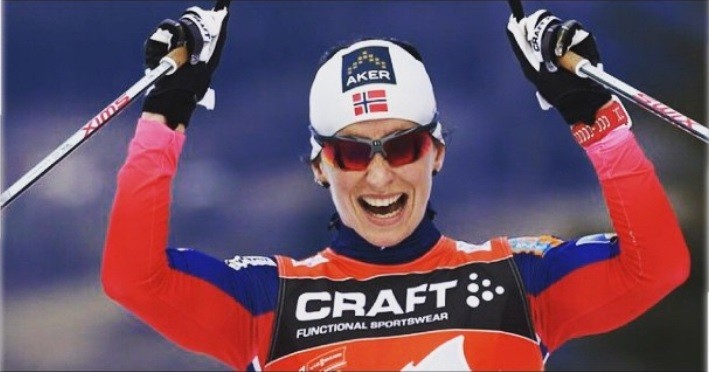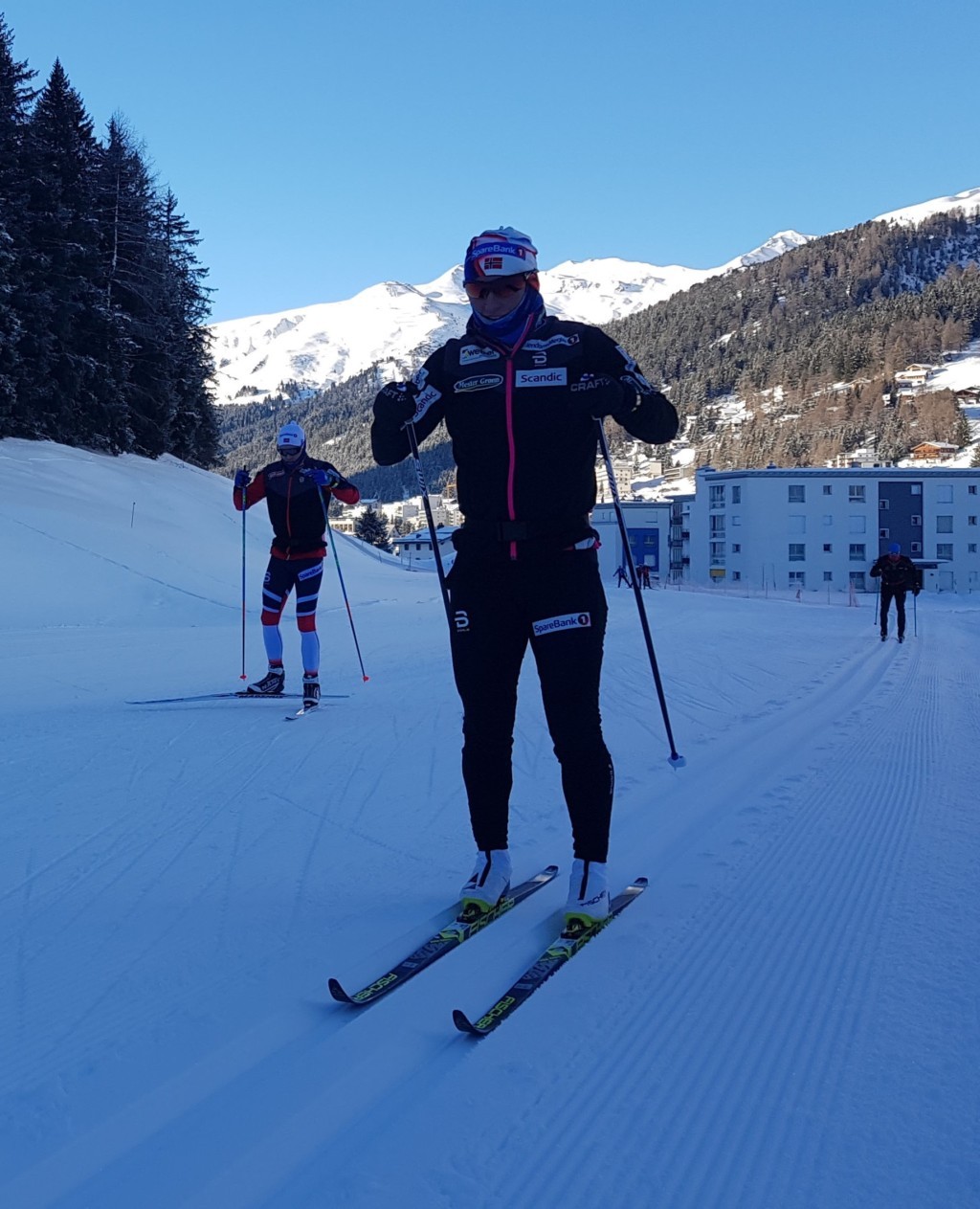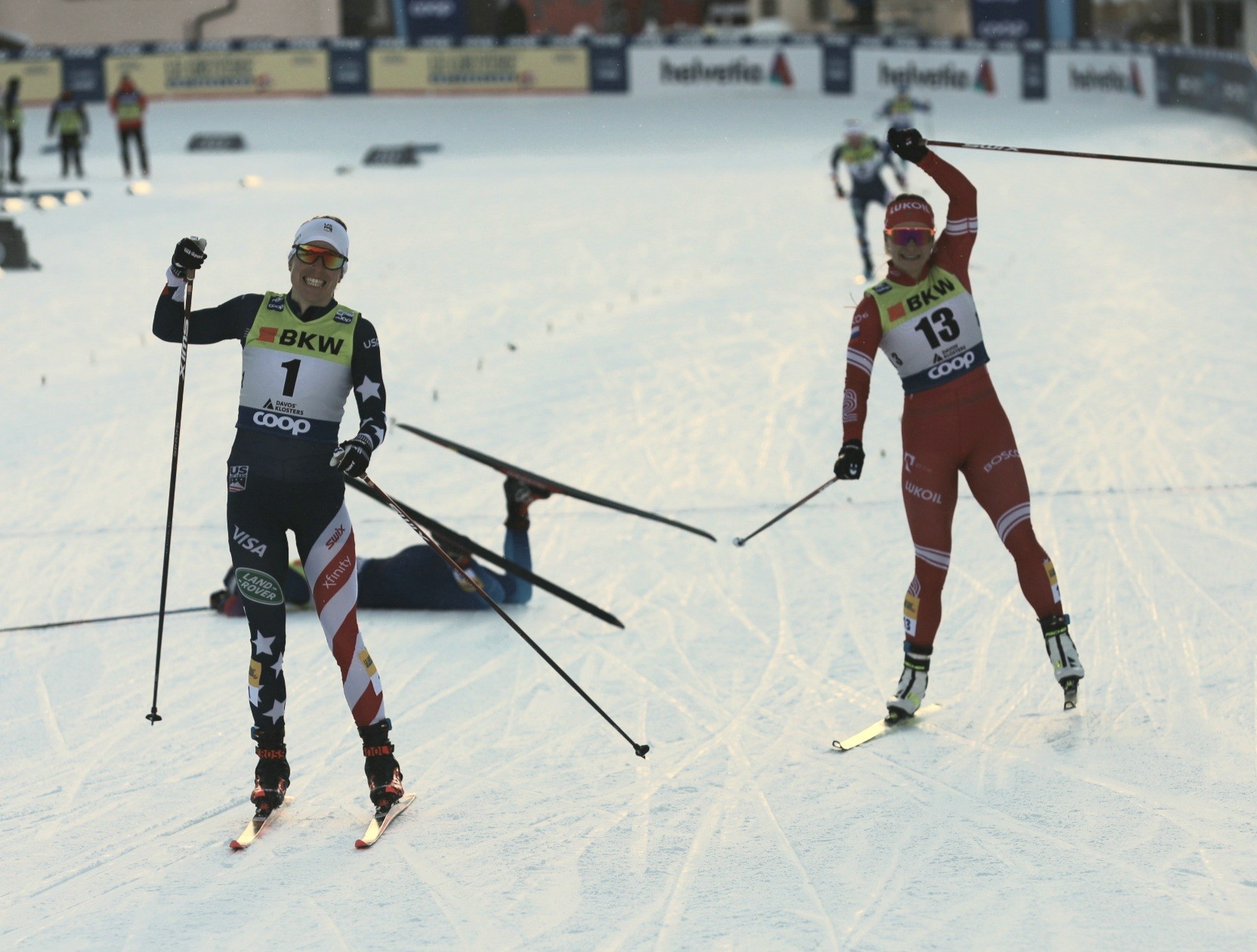
Nobody could dispute that Marit Bjørgen is the most successful cross-country skier ever, male or female. 6 Olympic golds and 18 ( eighteen!!) world titles say so – and rather unequivocally.
Bjorgen’s career spans almost 20 years – yet a 37 year old Norwegian shows no sign of slowing down in her hunt for race podiums.
Naturally,training regimen of the skier from Trondheim has become an object of major scientific study, undertaken by the scientists from Nord University, Bodø and University of Science and Technology, Trondheim in cooperation with The Norwegian Olympic Federation
The study in full could be found here
We today highlight key points, those of interest to both serious sportsmen and skiing fans.
– Marit was steadily increasing her training load throughout her career ( it would be fair to remember that at her earlier days Bjorgen was more of a sprinter than distance runner though)
“…Total annual training volume increased by 80% (from 522 to 940 h) from the age of 20–35 (2000–2015). This a yearly progression of 30 ± 53 h and an increase from ~10 to 18 weekly training hours….
– Compared to the earlier years, an increase in LIT ( Low Intensity Training) looks particularly dramatic:
“/…LIT volume increased from ~430 h (20 years old) to ~800 h (35 years old)”
– It reached a ( very high) plateau some five years go
“…Following a 12-year nonlinear increase in training load, the annual training volume during the five consecutive successful years stabilized at 937 ± 25 h, distributed across 543 ± 9 sessions. During these 5 years, total training time was distributed as 90.6% endurance-, 8.0% strength-, and 1.4% speed-training, with endurance-training time consisting of 92.3 ± 0.3% LIT, 2.9 ± 0.5% MIT, and 4.8 ± 0.5% HIT. “
– Those recent years ( 2010-2015) were the best ones in Marit’s career so far

– While the amount & characteristics of endurance training had stabilized, Marit radically increased the amount of hours of strength training.
“…An important change during the five investigated years was an increase in annual strength training time from ~51 h (43% core stabilization and 57% heavy strength training) during the first 2 years (30–32 years old), to ~90 h (50% core stabilization and 50% heavy strength training) in the following 3 years. This increase was due to both an increased number (55–75 sessions) and duration (0.9–1.2 h) of sessions.
– While Norwegian skiers in general are well known for they love of running as a form of endurance training, a lion share of it in case of Marit is still actual skiing/rollersking. Would be interesting to know whether this proportion holds true for the other elite Norwegians.
“…63 ± 3% (545 ± 18 h) of the yearly endurance and sprint training was performed as sport-specific exercise modes (i.e., skating and classical on skis or roller skis), with the remaining 37 ± 2% (318 ± 18 h) performed as non-specific activity forms (34% running and 3% cycling).”
– Bjorgen, as it is well known, is equally proficient in classic and skating. Proportions of training time spent are interesting though – and not explained in the study
“…The distribution of training in the classic and skating techniques were approximately equal in total training time (48 and 52%), LIT (49 and 51%), and HIT (49 and 51%), while the proportion of skating was substantially higher during MIT (61%)….”
– As expected, Bjorgen spends a significant amount of time training on altitude ( defined in this study as “ living at ~1,800–2,000 m above sea-level and training at 1,000–3,000 m”)
“….Total annual days spent at altitude was 61 ± 9, which were mainly distributed across five altitude camps (12–14 days June/July, 12–14 days August/September, 14–16 days October/November, 10–14 days in December and 10–12 days January/February)
– The authors’ conclusion is not exactly revolutionary: the more you train, especially in LIT, – the stronger skier you become. Ahem
“…study supports previous findings highlighting the importance of a high training volume, using a polarized training pattern with a large amount of LIT to reach world-class level in XC skiing…”

Top Photo courtesy of Marit Bjørgen Instagram account
Related Posts
- No Norwegians And Swedes? Bad For Sport, Excellent For Popularity
- You’d Never Guess Who Is Back On Ski Tracks
- 18 Year Old Helene Marie Fossesholm Selected By Team Norway
- Reactions To Norwegians Dropping Out Of North American World Cup Stages
- Good Day For Norway, For International Skiing – Not So Much
